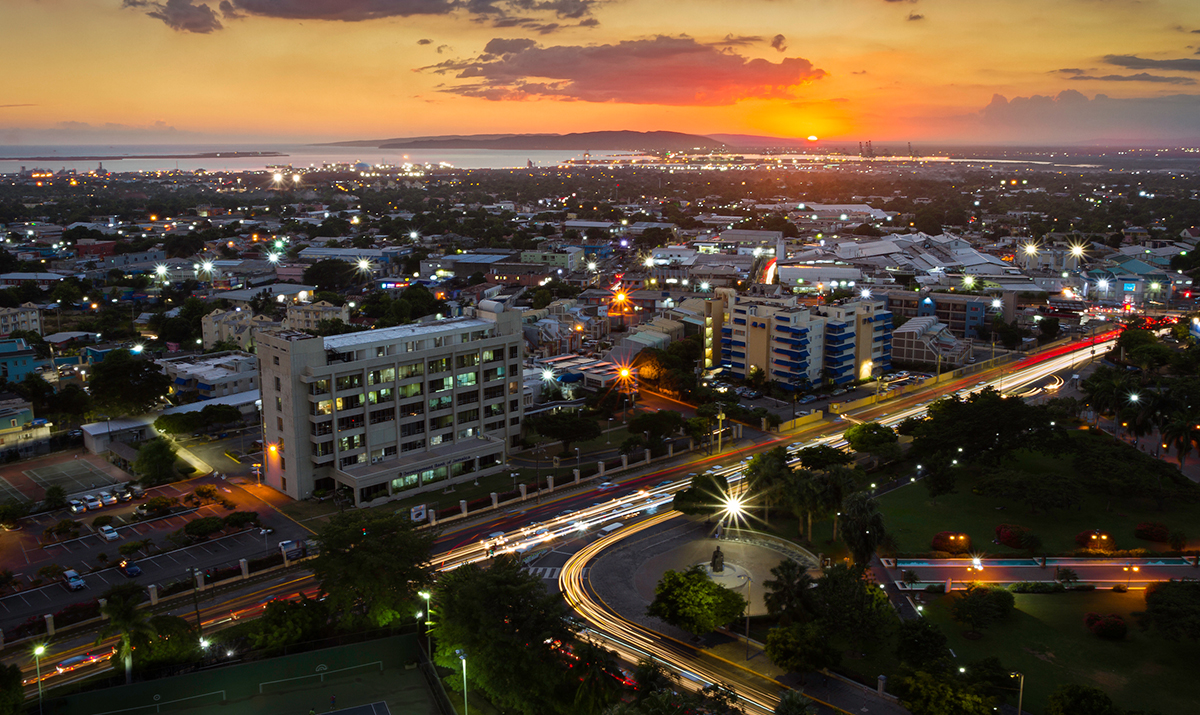
12 Sep New infrastructure creates solid base for a better future
Heavy investment in civil construction projects includes a sharp focus on transport networks, which boosts logistics and living standards
To enhance and expand the island’s inter and intra-connectivity in the fields of land, air and sea transportation, the Jamaican government has invested substantial sums in many new infrastructure and related initiatives in recent decades.
These projects have not only improved the quality of life for citizens, but also provided healthy support to logistics and tourism operations. With one of the densest road networks in the world, the task of keeping traffic flowing safely along its 22,000 kilometers of highways — which include toll roads, arterial roads and parochial roads — falls to the Ministry of Transport and Mining. Maintenance remains a challenge, notwithstanding there continues to be sustained efforts towards improving the existing highways network, notes former Minister of Transport and Mining, Audley Shaw.
“Within the last decade, there have been an increase in the kilometers of roadways throughout the island,” he states. “One important project that is now being finalized for implementation is the Montego Bay By-Pass. Montego Bay is Jamaica’s tourism capital and with the growth in activities over the years, there has been increased demand placed on the existing road capacity, hence creating tremendous congestion in the town. This new bypass will provide an alternative for motorists whose destination is not necessarily within the town itself.”
Switching his focus to the limited rail infrastructure and services, the former minister says several administrations over the years commissioned studies to ascertain the state of the railway network and rolling stock, with a view to determining the extent of the resources required to rehabilitate the network in its entirety.
“The aim is to do this on a phased basis and through partnerships with interested private sector investors,” he says. “In the last few years there has been focus on a section of the network in the tourism area. In January 2022, we started a student railway service in parts of St. Catherine, transporting students to and from Spanish Town to Old Harbour and Linstead. This is an ongoing initiative with a view to eventually extending into Portmore and Kingston.”
Better progress has been recorded in the aviation space, where the privatization of Norman Manley International Airport in 2018 has been a great success. In a similar vein, a string of improvement projects have been concluded at aerodromes across the island. They include major works at Ian Fleming International Airport (IFIA), a gateway that accommodates scheduled and chartered flights by many foreign airlines.
Turning his attention to the maritime sector on which Jamaica relies on for a lot of its trade activities and cruise tourism, the seasoned politician is excited about the prospects on the horizon from new alliances and contracts with major players in the international energy sphere. With the help and commitment of relevant agencies and authorities, officials are positioning Jamaica as a modern shipping and logistics hub for local and foreign entities seeking a maritime center in the heart of the Caribbean.
“Jamaica has consistently been a leader in maritime activities, representing the interests of other Small Island Developing States and the region,” he says. Putting the spotlight on the many sustainable initiatives and developments taking place, he adds: “In an era where technology is the driving force behind many economies and sectors, we must develop and implement new technology to work toward our goals of having greener, safer and more sustainable maritime spaces. It is imperative that we support and implement mitigation strategies to reduce the maritime transport carbon footprint.”
